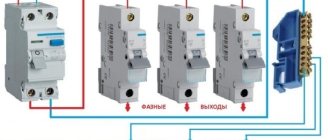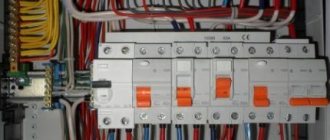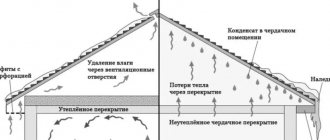Anyone who is professionally involved in the design and installation of lighting systems at large facilities and production facilities is bound to face the need for emergency lighting.
What should the correct emergency light be, what requirements should it meet, what certificates are required for lamps? We will try to answer all these questions in as much detail as possible in this article.
Regulatory documents and categories
The main document that summarizes the general requirements for emergency lighting and which all installers and designers should be guided by is the set of rules SP 52.13330.2016 ().
According to it, all emergency lighting is divided into two large categories:
- backup
It is used if, in an unplanned situation, you do not have the opportunity to abruptly stop any production or medical process (surgical operation).
- evacuation
Used to illuminate escape routes to emergency exits.
This type, in turn, is also divided into three categories:
- lighting of escape routes
This applies to ordinary buildings and objects - schools, business centers, hypermarkets, office buildings and more.
- lighting of high-risk areas
Mainly used in industrial plants.
- lighting of large areas - anti-panic lighting
Its task is to prevent panic, so that people in crowded places do not, roughly speaking, trample each other.
Consumer groups
Everyone who uses emergency lighting can be divided into several main groups. Each of them will be discussed in more detail below.
Strategic objects
If an emergency occurs here, it could cause catastrophic consequences. We can talk about violations of state security, injuries or deaths of people, as well as other similar consequences.
In such cases, an independent backup power network is installed, which can provide the same power as in the main network. It uses lithium-ion batteries, as well as spare diesel engines and generators. It is possible to use other emergency sources. Capable of supplying the necessary voltage for lighting during the entire period of restoration of the strategic facility.
Industrial buildings
The consequences of accidents can be injuries to people, decreased production, and serious disruptions in the operation of equipment. Here it is also necessary to use an autonomous emergency system. Unlike the first category, short-term power outages are allowed during repair work.
Here it is necessary to ensure the ability to manually turn on the system by specially designated duty personnel. Most buildings for industrial or administrative purposes fall into this category.
LED emergency lamp Source s3.ru
Other objects
Here, a power outage is allowed for a period that does not exceed a day. In such rooms it is customary to use low-power lighting fixtures. The emergency lighting can be started automatically or manually. Typically, the backlight is activated when a fire alarm is received.
In small rooms, it is sometimes practiced to use separate autonomous emergency lamps. Each of them has its own power source. The batteries used in them are charged in advance from the network and at the time of an emergency they provide a sufficient level of lighting.
Types of emergency lamps
All emergency lamps can be divided into two large groups:
- providing illumination of escape routes
That is, they directly create the light itself.
- evacuation signs
Which in fact do not provide as much light as the first ones, but they show people where to run.
The first type includes conventional work lamps, which are additionally equipped with emergency power units (EPUs).
Their arrangement must be such as to ensure in case of an accident a minimum illumination of 1 lux, with unevenness of no more than 1 in 40.
This means that at the darkest point between two lamps, the illumination should be 1 Lux (more is possible). In this case, the other most illuminated point can be 40 times brighter (40 Lux).
The normal operating time of such lighting is at least 1 hour.
Why is light important for health?
The work of our body is completely subordinated to the natural cycle of day and night, that is, light and dark time of day. We perceive light with the help of our visual organs. With their help, it is perceived by our brain and nerve receptors that determine our psychological state.
Light affects the entire central nervous system, which means our emotions depend on it. The work of the pineal gland, which is responsible for the production of the sleep hormone - melatonin, which, in turn, determines the accuracy of the biological rhythm of our body, depends on light.
Scientists at Oxford University have proven that light can both make you happy and make you depressed. With a small amount of it, people are overcome by lethargy and drowsiness. This is why depression is often observed among residents of northern countries. But the southern peoples, whose lives are filled with light, are, on the contrary, cheerful and active.
Scientific research shows the vital need to create a space for a person in which there is enough light for a full and healthy existence. This is the task of a lighting designer.
Installation locations
Where should emergency lights be placed? Such places include:
- corridors and passages on escape routes
- floor level differences
- turns and intersections in corridors
- medical aid stations
- fire extinguishing equipment storage areas
- emergency communication places
At the last points, in addition to lamps, signs must also be installed. Moreover, these indicators can be of different colors. For example, if green pictograms are used for evacuation routes, then red pictograms are used to indicate storage locations for fire extinguishers or first aid kits.
Very often, when entering a shopping center, you can see a sign indicating an emergency exit, but the background of the inscription is so dark that it doesn’t really glow.
This is against the rules and such signs cannot be hung.
- in all corridors at intersections with aisles
- on flights of stairs
- before each emergency exit
- where the evacuation plan or diagram is located
- in front of the building
In what places should anti-panic lighting be installed? First of all, in rooms larger than 60 m2. In business centers these are Open Space halls, in cinemas the cinema hall itself, in ordinary buildings - canteens, etc.
This type implies an illumination level 2 times less than previously discussed, namely 0.5 lux. The unevenness remains the same - 1 in 40.
In this case, anti-panic and evacuation lighting must be combined with each other.
You can't do one thing and forget about the other.
Tips from the experts
Recommendations from experts for self-installation of lighting in the house:
- Conductors with copper conductors are better able to withstand current loads, even when simultaneously connecting several consumers at once. Aluminum wires are brittle and require larger diameter products to carry the same current as thinner copper wires.
- It is better to divide lighting into several groups. If a breakdown occurs in a separate room, there will be no need to cut off power to the entire building.
- To regulate the intensity of the light flux, a dimmer is used, which is best installed in the living room, children's room, and bedroom.
- A safer, more aesthetically pleasing way to install electrical wiring is the hidden method.
- It is better to use thermal nozzles for marking, with which it will be easier to identify the malfunction and fix it.
Organizing lighting in a private home is a labor-intensive and painstaking task. It is necessary to calculate the maximum permissible load, the planned number and power of household appliances, and the style so that the lighting looks natural
If all precautions are taken, lighting your home is not difficult, but it will take a lot of time and effort.
Lighting of high-risk areas
These high-risk areas include workshops and production areas where there are rotating mechanisms or other traumatic equipment.
The minimum illumination in such areas should be 15 Lux. Illumination unevenness - 1 to 10.
That is, at the brightest point there can be up to 150 Lux when the voltage and main light disappear.
What to consider when repairing?
- Ceiling. A standard ceiling (up to 3 meters) cannot be made darker than the walls, otherwise it will crush. Classic white is best, but don't leave it undecorated. Shapes from moldings, perpendicular stripes or ceiling rosettes can help with geometry correction. A stretch ceiling made of glossy canvas will enlarge a small room. Made from matte, it will decorate the overall room.
- Walls. We have already talked about the color palette of the long and short sides; let’s decide on the finishing materials. Photo wallpaper with perspective really makes the space look wider, as do horizontal stripes. Vertical lines will “raise” the ceiling if necessary. In large rooms, feel free to use large drawings and macro images; in tiny rooms, use wallpaper with a small pattern and a 1:1 scale.
- Floor. A classic technique for pushing boundaries is the transverse arrangement of the floor covering. For zoning, they combine 2 different shades or materials, for example, tiles in the kitchen work area and laminate in the dining room. A rug thrown along a short wall will also decorate the room.
Fire resistant cables
All cable lines that are laid through panels and channels and feed emergency systems. lights must be made of fire-resistant materials.
For example, cables with FRLS indices.
These lines must remain operational throughout the entire backlight operation. In general, this time is 1 hour. In some cases, lamps can work for 3 hours.
Video text
Presented to your attention is a diagram of the simplest emergency lighting when using a 12 volt battery in the “Standby use 13.5v - 13.8v” mode and a load as a 12 volt LED strip.
Cashback 20% from AliExpress https://cashback.epn.bz/?i=522f5*cashback is the return of money spent when purchasing goods from AliExpress
This circuit can be used for any needs with different voltages and under any loads. *when used with other voltages, you should review the power supply voltage for charging the battery, relay for the required voltage and accordingly select the load for your voltage!
Our hands are not for boredom, Grandfather Xin - use your brains!
Emergency lighting is necessary when the power supply to the working, main lighting is interrupted for any reason. At this moment, it begins its work from a backup power line or built-in units (batteries), and serves to ensure visibility in the current conditions. This is true both for public and residential buildings, as well as for industrial, security or any other important facilities, each of which has its own requirements.
As practice and calculations show, turning off the main power supply to buildings and structures, even for a short time, can lead to unpredictable and destructive consequences: causing significant economic damage, causing great inconvenience to people, and in certain circumstances (for example, natural disasters, man-made disasters, terrorist acts ) cause human casualties.
The connection diagram of the luminaires that make up the emergency lighting must provide for their independent power supply (from a backup line or built-in units) and ensure operation for a certain time
Its correct calculation is an important component when designing buildings, especially if you plan to make the system yourself
Testing and verification
Emergency luminaires must be equipped with mechanisms to check their functionality.
This means that any light point or pointer equipped with an emergency power supply must have next to it either an individual test button or a special connector.
A device for operational testing, including remote testing, can be connected to this connector. There is no strict requirement here. One of the conditions may apply.
Thus, you were given the right to choose the types of lamps - a budget option or a higher class.
The chief power engineer must pass and press this test button at least once every 2 weeks. In addition to the inspection itself, a log of such testing must also be kept.
With a small number of light bulbs, this task is quite feasible. But imagine a large shopping center, where there may be tens or a couple of hundred such lamps or pictograms.
In this case, buttons or connectors are used for group testing. For example, a device such as Telemando, Telecontrol or their analogues.
1 of 2
It is connected via a special line and transmits a 12 volt signal. The maximum number of points that can be connected to it is 35 pcs.
Thanks to it, you can put all installations into emergency mode with the press of one button. But this requires the participation of two people, since the button is self-release. One pressed and held, the other went to check the chain.
It would seem, why is it done so inconveniently? However, all this is again subject to rules. They say that such devices must be push-button or self-pressing to eliminate the human factor.
For example, you turned on the test and went to check. And at this time you were distracted, called to another place, or you simply felt ill. You can forget about the switched on button, and during this time the battery will have time to discharge.
As a result, the lamps will be inoperable in a real accident.
Useful tips
And finally, I would like to provide you with some useful tips on how to properly make lighting in your dacha with your own hands:
- Illuminate garden paths using solar lamps. They are inexpensive, beautiful and practical, and can also decorate the area both at night and during the day.
- Never use incandescent lamps. These light sources have long lost their practicality, because... have low efficiency, short service life and high energy consumption. Opt for LED lamps.
- The degree of protection of electrical appliances must be no less than IP 43. This index means that the products are reliably protected from raindrops, accidental splashes and small debris entering the housing.
- Take your cable cross-section calculations seriously. Even small errors will lead to the conductor not being able to cope with its task. As a result, under overload, the insulation will begin to melt, which will soon lead to a short circuit.
- You can save a lot of your own money by creating a street lamp with your own hands. Today on the Internet you can find a lot of different ideas, the creation of which will require a minimum of money, time and effort.
- Once again we remind you about safety. Where possible, install 12-volt lamps with a step-down transformer. Typically, this option is used when creating illumination for a swimming pool and other bodies of water on the site.
- Take care of the high-quality connection of wires in the ground and in the air. Twisting with insulation, which summer residents love to use, is prohibited by the rules of the PUE. The conductor contacts must be connected in special terminals and couplings, which must additionally be protected by a junction box (in turn, its body is insulated with sealant).
- Be sure to make autonomous lighting for your dacha using LEDs and a car battery. In this case, if your home is left without electricity, you can continue your vacation by connecting light bulbs from a 12-volt battery. In addition, in this way you can provide lighting not only on the street, but also inside the house, because... LEDs are, of course, portable.
Batteries - testing times, replacement
By the way, not only the light bulb itself or the wiring to it can fail, but primarily the battery.
Therefore, their capacity should be checked separately every six months. All compact lithium-cadmium and even lithium-ion batteries have a limited service life.
Usually it is about 3-4 years. After which it belongs in the trash, or at a recycling plant. Although even if you throw it into the appropriate container, it is not a fact that it will end up where it is needed.
In general, regardless of whether there were emergencies or not, the batteries will have to be replaced with new ones once every 4 years.
basic information
The LED field is evolving, and new devices with improved characteristics are constantly appearing on the shelves. Already now, diode lamps are actively used in home lighting. These are economical devices with the best parameters and a wide variety of color temperatures.
Features of LED operation
LED lighting is created using light-emitting diodes. These are semiconductor devices that produce optical radiation when electric current passes through them in the forward direction. The LED itself consists of a semiconductor crystal, a lens, and contacts. There are different types of LEDs, differing in design, brightness, power, color and other characteristics.
Pros and cons
Advantages:
- efficiency;
- eco-friendly;
- life time;
- safety;
- no pulsations;
- range of color temperatures;
- variety of execution.
The only disadvantages include the high cost of the lamp.
Design of LED lamps
The light bulb consists of an LED matrix, a driver, a housing with a heatsink, a base, and a glass or plastic diffuser. The flask itself can be of different shapes.
Fire certificate
Do I need a fire certificate for emergency lamps? It is necessary if this lamp also performs the function of a fire alarm and automatically turns on when the alarm is triggered.
Such detectors are equipped with special connectors capable of receiving signals from the fire automatic system. Those models that do not have this do not require certificates, but they cannot be used for fire alarms.
Mandatory requirements also include the availability of certificates and compliance with TR CU 004/2011 “On the safety of low-voltage equipment” (). Roughly speaking, the lamp should not give an electric shock.
This is not a track version that can be moved even under voltage.
For example, if you remove a lampshade to replace a light bulb, there should be no exposed live parts anywhere that could be accidentally touched.
Switching method
Emergency lighting is turned on when the main one is turned off. In this case, a special relay reacts to a power failure, which turns on the emergency lighting system. This switch must be selected to operate reliably. If in an exceptional situation it does not work, then it will need to be turned on manually. This possibility must be provided when installing the lighting system.
Equipment designed to turn on or off the emergency lighting system must be located in a specially designated area. It must be accessible to personnel and protected from entry by unauthorized persons.
It is necessary that switches are located in fire-proof cabinets. Symbols should be provided to explain the use of the various elements.
Emergency lighting in the metro Source svetpro.ru
Color, sizes, quantity and types of signs
As mentioned above, signs that indicate the direction of evacuation routes must have a green background color. The minimum brightness at any point of this green background should be 2 cd/m2, if this is a smoke-free room and it is equipped with smoke exhaust systems. If this is not the case, up to 10 cd/m2.
Many manufacturers make this green background so dark that it simply does not allow light to pass through. And the man or other figure in the center of the sign is not a bright white-contrasting color, but a dark greenish one.
Try to avoid such products, this is a violation of the requirements. By the way, the height of the sign directly affects the distance of its recognition. Roughly speaking, it depends on what distance you will see it from.
To calculate this distance, you need the height of the icon in meters, multiply by a factor of 200.
For a pictogram with a width of 20cm, the recognition distance will be: L=h*200=0.2*200=40 meters.
If your corridor is much longer, then the number of signs will increase.
One will not be enough at the very end. Based on this, their total need is calculated.
To view the types of signs, their designation and applicability, click on the cross.
Evacuation safety signs
Fire safety signs
Architectural lighting plan
The organization of street lighting for a private house always begins with a project
. It doesn’t matter whether the lighting is planned for a cottage or a small country house. This way you will clearly understand the result before installation, and will be able to make timely adjustments, if necessary.
Modern computer programs allow you to visualize any idea; you just need to contact a designer to create a 3D composition. If you don’t want to contact contractors, you can draw up a plan yourself by hand or on the computer.
3D visualization will help you see the result of the lighting project for the facade of a private house even before its installation
To draw up a lighting project for your home, you will need to take into account a number of features:
- The architecture of the building. Too pretentious, bright lighting for a wooden house of classical architecture will look out of place. And the lighting of a modern stone house, consisting of only a couple of spotlights, is boring and uninteresting.
- Distance from neighbors. It happens that you want bright light, but there is a neighboring house a couple of meters away. Then it’s still worth dimming the light so that it doesn’t shine into the neighbors’ windows, causing discomfort.
- Technical installation capabilities. Are you ready to hire a team of professionals or want to do it yourself? Is it possible to install hidden wiring or has the front façade already been finished?
- Lighting solutions in other buildings on the site (if any). Try to follow the general concept if the area is already illuminated. Or consider lighting the gazebo, veranda and other areas of the local area, taking into account the style of facade lighting.
Budget and deadlines.
Decide for yourself how much money and how much time you are willing to spend on creating full-fledged street lighting for your home. The choice of luminaires for façade lighting will directly depend on these parameters.
On a note! It’s good if the architectural lighting plan is drawn up by a specialist. Then he will develop an electrical installation diagram, think over the power supply network, select control methods and a cable layout for the lighting fixtures.
To create a diagram yourself you will also need:
Mark on the diagram those parts of the structure that are important to highlight. Select light sources. Schematically depict the location of lamps and auxiliary elements on the plan.
A plan diagram of architectural façade lighting will help you create a competent lighting system, calculate the number of lamps and the cost of purchasing them
Noise immunity
Another requirement for lamps already in GOST 60598-2-22-2012 () is electrical safety and electromagnetic compatibility. What it is?
This means that the emergency lamp should not produce high or low frequency emissions. Cheap models without filters that should equalize the voltage sine wave can affect the operation of electronic equipment.
This is especially dangerous in hospitals, surgical operating rooms, laboratories, and military facilities. Therefore, the corresponding certificate must also be attached here.
Area in front of the garage
Outdoor lights should also be placed near the garage door and on the driveway. One or more lanterns will do the job perfectly: it all depends on the size of the access area.
Lamps with gas-discharge lamps on high supports have proven themselves to be excellent. They evenly illuminate the road surface and the surrounding area, do not require maintenance, and last for at least 6 years. It is convenient to control such lamps using a twilight relay: it will automatically turn on the lamps as soon as natural light becomes insufficiently bright.
Be sure to take into account the existing lighting of streets and neighboring areas. Your area may be illuminated by someone else's light source, and your lamp may disturb your neighbors. Think about how not to disturb the overall comfort.
Flammability test
GOST 60598 also contains conditions on the material of manufacture. The housings of emergency lamps must withstand exposure to fire and temperatures of 850 degrees.
This means that the model at a given temperature should not ignite and will not contribute to the spread of fire.
Yes, the body can melt and collapse, but the most important thing is not to support combustion.
The flammability test is carried out on a stand, where a red-hot wire is brought to the body and the effect is observed. If melting occurs, tissue paper is placed underneath. At the same time, drops falling on it should not ignite it.
Does the food look more appetizing?
In terms of lighting rules, the working surface in the kitchen is approximately the same as the work area: the color must be conveyed as accurately as possible so that the products look natural and appetizing. Therefore, we follow the same rule: we choose lamps with an indicator of at least 80 Ra/CRI. Another thing is the temperature of the light: the colder the light, the more unattractive the food looks. So, under a 6,000 K light bulb, the products will have a bluish tint. It is optimal to keep the temperature at 2,700–3,000 K - this is natural light.
A common mistake in arranging lighting in the kitchen is to place the light source on the ceiling so that the person cooking is directly below or in front of it. This leads to chiaroscuro, which makes it difficult for you to clearly see what you're cooking. This can be corrected by installing additional light under the cabinets and illuminating the work surface.
Connection via switch
One of the frequently asked questions is how the emergency light is switched. Should it be connected via a separate switch and if so, how will it go into emergency mode if you have previously turned it off?
If we are talking about light points for escape routes (work lighting), then of course they all must be turned on and off, just like regular lighting through a switching device. Here the emergency power supply unit is connected by a separate line to the switchboard.
Moreover, through a special relay, the presence of voltage is monitored, but not at the switch, but in the panel. And only when U disappears in the shield, a signal is given to switch the battery.
Therefore, even if you intentionally or accidentally turn off the switch, in any emergency situation and the voltage in the control panel disappears, the lamp will still light up.
It would also be worth noting that even in operating mode, emergency. luminaires must be powered from an alternative power source, i.e. from a separate switchboard.
If an accident occurs in it, then the transition to the battery takes place.
Also, do not forget that not only the mode when U has disappeared completely is considered an emergency, but also has gone beyond its limits.
For example, it fell below 160 volts or jumped over 260V. Any driver has its own tolerances.
As a rule, it maintains operating mode within plus or minus 20%. If U in the supply line drops below, a switch to the battery block also occurs.
What should you consider when organizing lighting in the living room?
To plan the lighting in the living room correctly, you should take into account some nuances that will help give the room a respectable look. Well, they will make your stay in this room as comfortable as possible. However, much in choosing the number and types of lamps will depend on the planned style of the interior. Therefore, in each individual case, lighting should be approached individually, taking into account some recommendations.
Well-designed lighting should complement the decoration of the room, and not discord with it.
- If you plan to make the room bright, then you need to think about not only the placement of lighting fixtures, but also the color scheme of the interior.
- To make the lighting more intense, the living room ceiling should be well lit. This factor will help visually expand the space of the room. Therefore, if the design provides for one chandelier, which should become the center of the composition, then it is recommended to supplement it with spotlights.
- The room must be divided into zones. If you plan to install a dining table in it, then above it you can attach a height-adjustable lamp with a lampshade that matches the situation.
Lighting devices must correspond to the conventional zone in which they are installed.
- A sconce or a stylish floor lamp can be installed in a relaxation area, doing handicrafts or a favorite hobby.
- Cabinets, bookshelves or niches are often equipped with lighting from spotlights or LED strips.
- If the design includes a multi-level ceiling, then an LED strip or tube can also be used to highlight its levels or individual elements.
- In addition, you need to decide on the tone of the light - it can be warm or cold. This point depends on the chosen interior style. For example, for modern minimalism, cool shades are more suitable, while for “Provence” or classics it is better to choose warm-colored lighting.
The original lamp on the ceiling looks like another window and significantly expands the visual space of the room.
- An excellent effect of expanded space and “presence of air” is provided by a ceiling with lighting made to simulate a daylight source. This element turns a room in an apartment in a multi-storey building into a “room in a private mansion” with a large window on the ceiling surface.
- In a living room with one window, also facing the north side of the house, you can enhance the lighting by installing lamps with shades that direct light towards the ceiling surface.
How to make emergency lighting - options
How can you turn a work light into an emergency light? For example, you design and arrange task lighting according to your room as in the figure below.
So, initially you can install such lamps that will already be equipped with emergency power units. And with these same blocks, in the event of an accident, only one of the LED backlight modules will turn on, and not all at once.
That is, in an emergency, it will not produce 100% of the luminous flux, but only 10-15%. The main thing is to correctly arrange and ensure the required illumination on evacuation routes is not lower than the norm.
Emergency power units can be:
- built-in
They are installed between the driver and the LED module.
- universal or external
The second option is used here. Sveta. External ones are connected if you are upgrading already installed lighting, when what was initially purchased or designed was not what was needed.
This block is not connected to any single LED module, but directly to the driver. And in an emergency it produces a voltage of 220V. In this case, the lamp operates at 100% of its power.
What are the advantages of the second option?
- saving time for modernization
There is no need to climb into the case, understand the circuit, fiddle with a soldering iron, etc.
- reducing the number of emergency lights
Since here the lamp will produce 100% of its luminous flux, it is possible to significantly reduce their total number and at the same time comply with the requirements of the standards.
This also results in significant savings. Here is a real cost calculation when using luminaires with built-in emergency power supplies (EPUs) and external ones.
1 of 2
As you can see, in the second case there is a direct savings in money of almost 50%.
- possibility of connecting several lamps to one block at once
For example, from a model such as the Conversion Kit Power Led, you can power several LED lamps with a total power of up to 40W. The maximum permissible distance of luminaires from such a BAP will be 200m.
There are also more powerful models 120-200W. They can be immediately assembled in a box with IP65 protection. The weight of powerful UPS batteries is approximately 1.5 kg.
- ability to connect lamps and signs on the street
According to safety requirements, emergency exits must be provided with appropriate signs outside the building, i.e. on the street. The problem is that today there are no compact batteries (even ferropolymer ones don’t help) that would work normally in our winters and temperatures of minus 20-30 degrees.
And with remote blocks everything can be solved. You install it inside, in a warm room, and hang the sign outside.
The versatility of modern lighting design solutions
In any room, general lighting should be correctly combined with task and accent, local and combined. They have their own subtypes and varieties. If the general one should, let’s say, get rid of darkness as a whole, then the other devices have the function of highlighting individual elements. This is achieved by using different light sources in the room, regardless of the overall design.
LED lighting in the living room interior
Types of artificial light sources:
- LED lamps are a modern alternative to the classic “Ilyich bulbs,” the use of which is expensive today.
- Incandescent lamps are considered archaic, but they cause minimal strain on vision, and their spectrum imitates the sun's rays as much as possible.
- Energy-saving lamps are quite economical, but their frequent flickering tires the eyesight; they are offered with a “warm” and “cold” spectrum.
- Fluorescent lamps are most often used for retail and industrial spaces, but these lamps also find worthy use in “studio spaces” without walls (simulating daylight).
- Light-emitting cords "duralight" based on LEDs are an excellent way to decorate individual elements of the interior and external lighting, complementing the original design of the light in the apartment.
- Bright halogens have different shades of light; these lamps are widely used in decorating spaces.
LED strips allow you to organize any decorative lighting options for ceilings, walls and furniture
When calculating the total intensity, the solution of suspended ceilings is taken into account. The lighting design in the bedroom and living room using multi-level structures is self-sufficient, with the exception of adding devices for local areas.
Varieties
Typically, all wireless systems are similar to each other, but there are still some differences. For example, there are switches that operate from a Wi-Fi network or using radio waves.
Touch switches only need to be touched to activate them (or they may have a push-button system). They may differ from each other in the possible number of connections.
If the system has a delayed shutdown feature, this will allow you to get into bed with the lights on.
Some systems are equipped with a motion sensor. The light in such systems turns on when you enter the room. At the same time, you can configure the motion sensor so that it reacts only to a person
Therefore, before choosing a lighting set, it is important to decide what exactly you expect from it.











